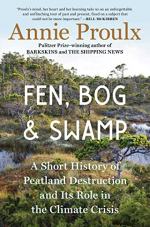|
This section contains 1,491 words (approx. 4 pages at 400 words per page) |

|
Summary
In “Swamp,” the author shifts her focus to North American ecology and the third wetland ecosystem designation, swamps. Unlike fens and bogs, swamps have significantly shallower water and support the growth of large trees. As such, they are the final step in ecosystem succession before the region becomes designated as a forest.
As with other wetlands, early American settlers viewed the regions as places to be plundered or extirpated because they created nuisances. This mindset caused the destruction of vast tracts of environmentally significant regions, which were often converted to farmlands. The author attributes this series of events to a human tendency to understand only small parts of large and complex systems. American swamplands were critical habitat for incalculable populations of waterfowl. While it is undeniable that market hunting destroyed these populations and their diversity, the loss of habitat caused by a desire...
(read more from the Pages 125-174 Summary)
|
This section contains 1,491 words (approx. 4 pages at 400 words per page) |

|




